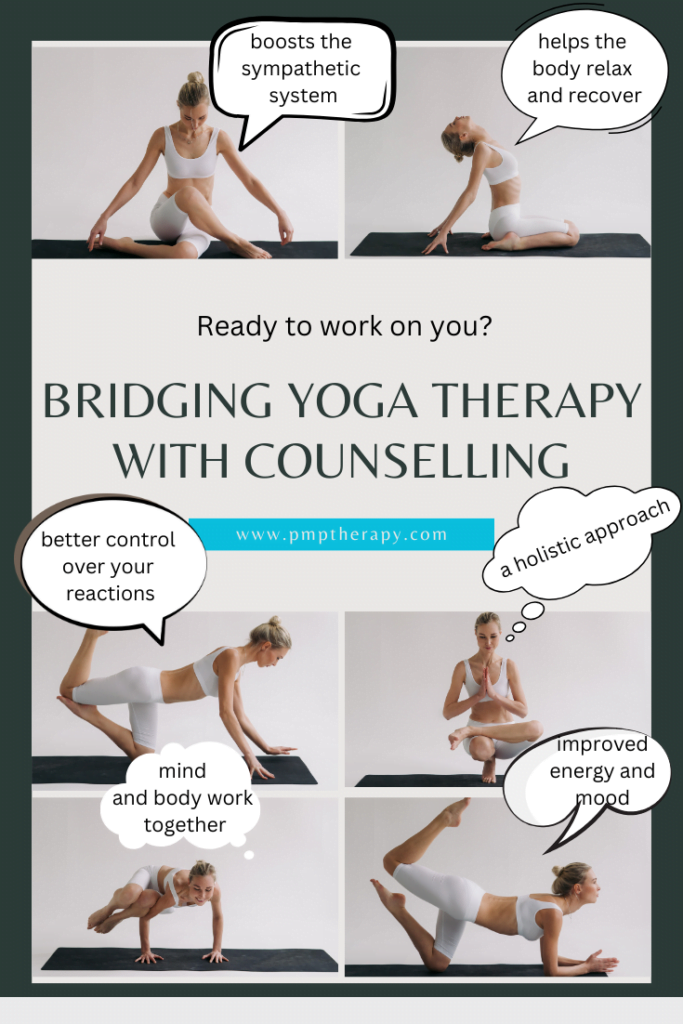Balanced Beginnings: Bridging Yoga Therapy with Counselling
In an era characterized by rapid change and frequent challenges, understanding mental distress and its profound impacts on our emotional and physical aspects is essential. Yoga therapy, premised from a remarkable intersection between ancient practices and modern science, offers a promising avenue for healing.
The Science Behind Yoga: Heart Rate Variability (HRV)
Recent studies have brought attention to heart rate variability (HRV) as a gauge of the autonomic nervous system’s functionality. The autonomic nervous system (ANS) is a part of the nervous system that regulates involuntary bodily functions such as heart rate, digestion, and respiratory rate. It consists of two main branches: the sympathetic system, which prepares the body for stressful situations, and the parasympathetic system, which helps the body relax and recover. Specifically, while the sympathetic nervous system (SNS) activates the body’s response mechanisms, the parasympathetic nervous system (PNS) ensures restorative processes (van der Kolk, 2014). Depression, anxiety, stress-related concerns, traumatic experiences, and other mental health distress can unsettle this balance, often resulting in prolonged states of hyper-awareness or debilitating lethargy (Capon, et al., 2021; Lundt, & Jentschke, 2019; van der Kolk, 2014).

Thus, HRV serves as a tool to gauge the balance between the sympathetic and parasympathetic systems in our body. Simply put:
- Inhaling boosts the sympathetic system, increasing heart rate.
- Exhaling stimulates the parasympathetic system, slowing the heart rate.
In healthy people, this results in a consistent rhythmic change in heart rate with each breath, which indicates good overall well-being. A well-balanced autonomic nervous system offers better control over our reactions, both emotionally and physically. When in balance, we can rationally assess situations and manage our responses. However, those with a poorly regulated system can easily become overwhelmed; mentally and physically (van der Kolk, 2014).
“Yoga attempts to create a state in which we are always present – really present- in every action, in every moment”
– Desikachar, 1995 as cited in France et al., 2021, p. 464
What is Yoga Therapy
Yoga therapy “is a scientific system of self-investigation, self-transformation, and self-realization” (International Association of Yoga Therapists, 2020, para. 1). It emphasizes breath control, mindfulness, and deliberate physical movement. It offers a holistic approach to re-establishing SNS and PNS equilibrium. By fostering the connection between mind and body, yoga therapy can address trauma’s deep-rooted effects, bridging the gap between contemporary therapeutic methods and age-old wisdom (van der Kolk, 2014).
Yoga Therapy Sessions
This form of therapy offers a personalized experience that targets not only the mind, but also the body. Whether one-on-one or within a group setting, yoga therapy, combined with traditional counselling techniques, guides clients to holistic healing. Sessions are tailored to each individual’s comfort and preferences, so no two sessions will look exactly the same. While they can encompass elements like asana (postures), pranayama (breath and energy work), mindfulness (staying anchored in the present moment), meditation, or enriched by the use of sound, it is always based on what the client is comfortable with. Beyond the physical, yoga therapy offers an invitation to journey into one’s inner world (France, et al., 2021).


Benefits of Yoga Therapy
Embracing yoga therapy not only advocates for physical wellness but also champions a comprehensive and transformative approach to emotional and psychological restoration. Research indicates that yoga therapy is a valuable complement to traditional counseling. When paired together, they offer a holistic approach that addresses both the mind and body. Studies have shown that this combined method can be particularly effective in alleviating symptoms of anxiety, depression, stress-related issues, dissociation, trauma, post-traumatic stress disorder, and so much more. Yoga therapy, paired with traditional counselling, provides individuals with a comprehensive path to healing and well-being (Capon, et al., 2021; Lundt, & Jentschke, 2019; van der Kolk, 2014).
References:
Capon, H., O’Shea, M., Evans, S., & McIver, S. (2021). Yoga complements cognitive behaviour therapy as an adjunct treatment for anxiety and depression: Qualitative findings from a mixed‐methods study. Psychology and Psychotherapy, 94(4), 1015–1035. https://doi.org/10.1111/papt.12343
France, M.H., Del Carmen Rodriguez, M., & Hett, G.G. (2021). Diversity, culture and counselling: A Canadian perspective. (3rd ed.). Brush Education Inc.
International Association of Yoga Therapists. (2020). Definition of yoga therapy.
Lundt, A., & Jentschke, E. (2019). Long-Term Changes of Symptoms of Anxiety, Depression, and Fatigue in Cancer Patients 6 Months After the End of Yoga Therapy. Integrative Cancer Therapies, 18, https://doi.org/10.1177/1534735418822096
Van der Kolk, B. (2014). The body keeps the score: brain, mind, and body in healing of trauma. Penguin Books

 Book A Free Consultation
Book A Free Consultation